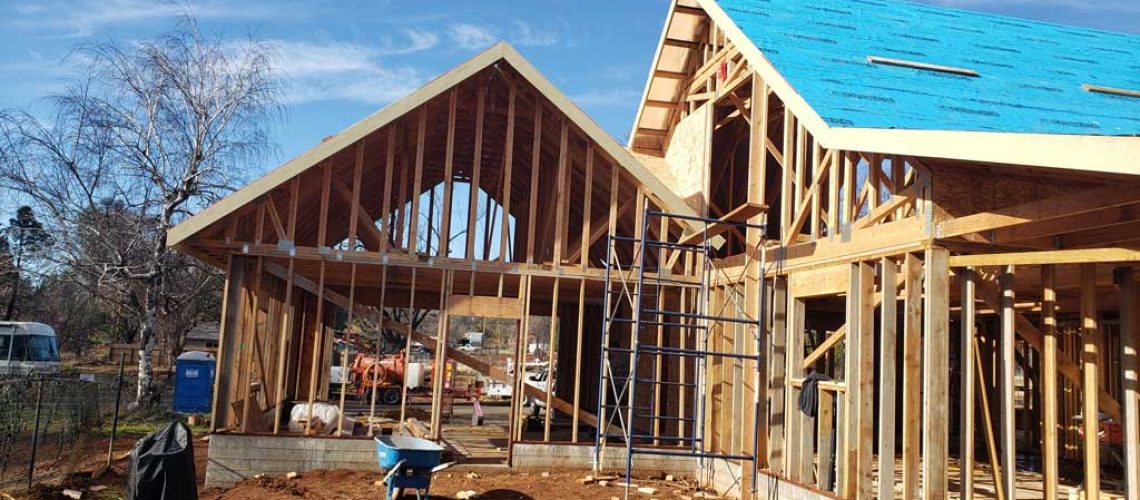
Often times we are asked what the necessary steps are for a home owner to remodel a kitchen, bathroom, deck, or their entire house. Similar questions are asked about building a new house on a vacant lot. While this is not meant to be a one size fits all guide, it can be used to ensure you are asking the right questions at the beginning of a project and to the right people.
With any project, a proper site plan is a must. This generally shows your existing structure(s), distances to property lines and easements, location of underground utilities, and the location of a well and septic as well as required setbacks. From this site plan, you can see how much room you have to expand your addition or deck into, without crossing over minimum setback requirements. The setbacks are typically found by locating your zoning requirements or asking your jurisdiction’s planning official. There are setback requirements for most aspects of your project. These include minimum distances to your property lines and easements in all directions, distances between structures, distances to fresh water supplies and waste water disposal systems, maximum height requirements, maximum lot coverage area, and maximum square footage based on number of bedrooms.
Remodels
So you want to renovate your kitchen and open that formal dining room up to combine with your living room, thus giving you a great room? Planning is key to making this a success! Simple plans (overall layout, electrical, plumbing) may be all that is required to show the local jurisdiction what you plan on completing, however, most of the time removing a wall will require a licensed professional to come out and investigate the wall to be removed. Is this a load bearing wall? Does this wall provide lateral resistance for the structure as a whole? If the wall is not structural, the plans remain fairly simple. If however, the wall provides a structural component to the house, further investigation may be required and designs developed. What will bear the weight from the roof and possible floor levels above? Likely this will be a beam and post scenario. Can the beam be exposed or must it be hidden away in the ceiling? If the wall provided lateral support as well, is there another wall that can now take the lateral support or will moment resisting frames be needed? What kind of existing foundation is there to work with? Is the foundation easily accessible? What is the structural system above this area? Is it comprised of trusses, floor joists, or something different? All these questions and their corresponding answers factor into the design of the remodel and into the overall cost of the project.
Remodeling a home can be costly, especially if not properly planned and executed. Unfortunately, this home remodel began without permits and was soon red tagged by the County. Most of the work completed was not up to code and needed to be removed and replaced with compliant work, thus costing the homeowner much more time and money.

Additions
Additions can be a great way to add value and space to your current home. Plans for additions are similar to those of a remodel. Much of the design depends on what constitutes the existing structure. Can the existing structure be added to or modified in a way to accommodate the new loading of the addition? Or will certain aspects of the existing structure need to be removed and replaced to create a more efficient and cost effective design? When considering an addition, the site plan criteria should be reviewed to determine how much room you have to construct on, what utilities and septic lines may be impacted, and if your septic tank is adequately sized for the addition, or if additional septic work will be required as well. Other questions to consider include:- Is the current HVAC system and water heater appropriately sized to accommodate the additional space?
- Will there be a significant amount of soil grading to fit the addition into place?
- Where is the current flow of water on the property?
-
- Is the addition being built in the middle of this flow?
- How will the addition’s position affect the flow of water on the property?
-
- How will the addition affect natural lighting in the room(s) adjacent to the addition?
- What will the roof lines look like with the addition?
- How will water flow off the roof? Will a roof above drop snow onto the new roof (ie a second story shed roof adjacent to a single story addition roof)
- How does the addition affect the flow of the house? Should remodeling of existing home be completed to maximize your space and usability of your home?
Deck Rehab Projects
Wooden decks are often outlived by their house counterpart and homeowners frequently find themselves wanting to replace the rotting members of their decks. Many jurisdictions will allow the replacement of the decking surface material without the need of engineering or approved plans. However, when railing, joists, beams/girders, and/or foundations are to be removed and replaced, an approved plan will need to be in place. There are some great prescriptive resources (jurisdiction dictated plans) available to complete a deck design without getting an engineer involved. Often times these can be used in areas with a snow load less than 40 pounds per square foot and the deck meets certain height and size limitations. These prescriptive guides are limited in nature and the span tables can only accommodate a fraction of scenarios, so if the covered scenarios don’t meet your needs, or your deck is not eligible for the prescriptive designs, then an engineer will need to become involved.
One of the main sticking points in rehabbing your deck is the ability to remove and replace in kind. This seems like a simple enough concept, however with the many changes in building codes and strength of materials, this is an unlikely outcome. On January 30, 2017, new live load requirements took effect in California. This new requirement increased the liveload of decks by 50%. This change alone makes many decks in low or no snow areas obsolete with today’s designs. This loading requirement has increased the joist, beam, and footing sizes for many decks and makes the remove and replace in kind scenario no longer viable. In higher snow country, the snow load still exceeds the live load requirements and many decks would still meet today’s design requirements.
In the photo to the right, you will see an existing deck with typical supports from decades past. This deck was failing and could not be removed and replaced in kind, for good reason I might add. This particular deck is a two story deck, with the second level post landing on the first level decking and not directly supported below. This was causing the decking material to sag and crush under the load from above. The foundation consisted of precast pier blocks that were wet set in concrete with a buried depth of about 8 inches and a diameter of about 12”. Since the foundation was undersized and not buried to a proper depth, it began rotating at some point and required a temporary fix of an added diagonal brace to the post. If this deck were to be removed and replaced in like, the same issues would surface and could cause catastrophic failure if the second level collapsed.
New Construction and summary to follow in Part 2 of this guide.



